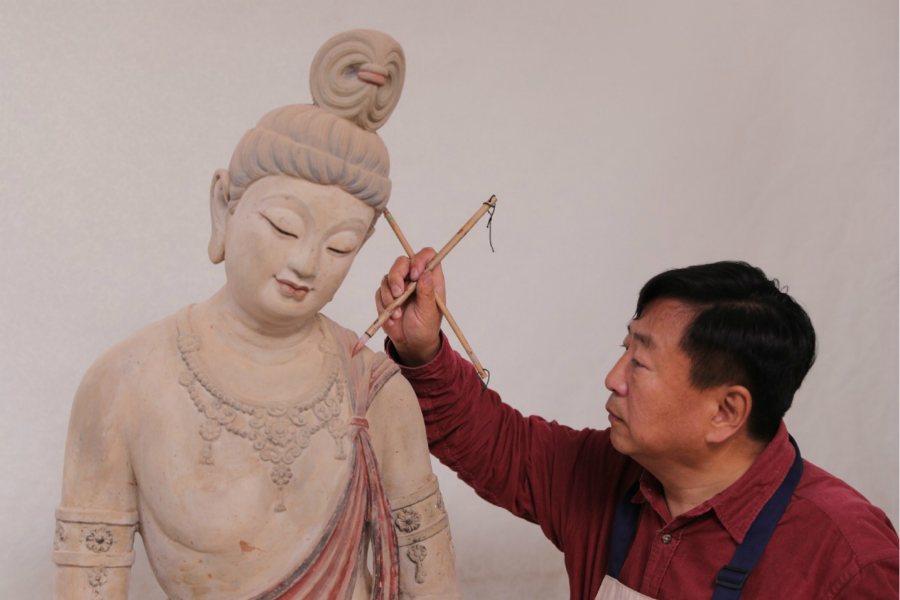Cultural connections gain fresh life

Du Yongwei, an expert in traditional art, paints a clay sculpture in his studio in April last year. [Du Zheyu/Xinhua]
Xu says that while the COVID-19 pandemic has halted cross-border exhibitions over the past year, other factors have in the past brought their own difficulties, such as transportation, financing, and exhibits' vulnerabilities. "I think that in the post-pandemic era, there will be more cultural relics exhibitions from BRI countries in China, as Chinese audiences' demand for such exhibitions is getting stronger," she says.
In 2016, more than 30 museums from countries participating in the BRI formed an alliance under which they signed agreements on the protection and exchange of cultural relics, along with efforts to promote mutual learning among civilizations and cultural coexistence.
Han Bing, the chief researcher of culture and entertainment practice of global consultancy Roland Berger, says cultural exchanges help people in BRI countries to understand each other.
"Museums are important carriers of culture and history, and every exhibit tells a story," she says. "Cultural relics selected for exhibition should represent a country's unique culture and history and the values of openness and inclusiveness of the BRI."
She says the staging of cultural exhibitions can also help BRI nations exchange experiences on the operation and management of museums, taking in business models, fundraising and management systems. Such shared knowledge can improve the management efficiency of these museums.
Yang Ran and Wang Kaihao contributed to this story.
























